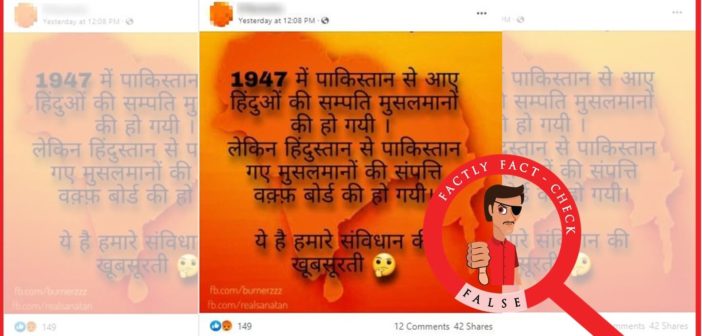A social media post claiming that the properties of Muslims who migrated to Pakistan from India after 1947 are vested with the Waqf board, is being widely circulated. Through this article let’s fact-check the claim made in the post.
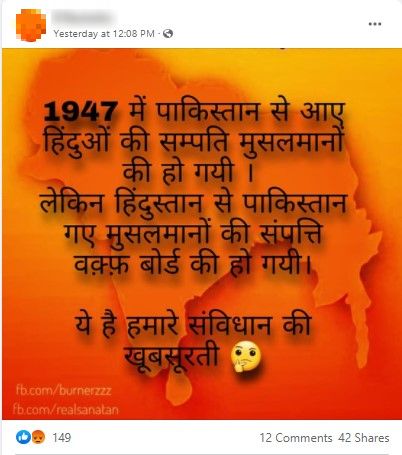
Claim: Properties of Muslims who migrated to Pakistan from India after 1947 are vested with the Waqf board.
Fact: It is the government that took control of those properties of those who migrated to Pakistan following the initial years of partition. Government compensated people who came back from Pakistan to India with these properties. Legislations like The Administration of Evacuee Property Act, 1950 & 1952, The Evacuee Interest (Separation) Act, 1951 and The Displaced Persons (Compensation and Rehabilitation) Act, 1954 facilitated for the compensation. Later on, the government renamed these properties as enemy properties following the Indo-Pak wars. Subsequent legislations like the Defence of India Act, 1962, The Enemy Property Act, 1968 continued with control of government over these properties. The 2017 amendment to the 1968 act has provided the government to seize these properties. In fact, in 2019, the government has sold few of these properties. Hence the claim made in the post is FALSE.
Following the partition of the country, the government of India has promulgated a few legislations to facilitate the rehabilitation of the displaced people and deal with the properties of the people who migrated from India to Pakistan. It is the government that took control over these properties through these legislations. Over the years, there has been a change in terminology in naming these properties. In the initial years after partition, properties of people who migrated to Pakistan were called evacuee properties and following the Indo-Pak war these properties were named enemy properties. These legislations that governed these properties are briefly discussed below as per the chronological order.
The Administration of Evacuee Property Act, 1950 & 1952 :
These are the initial legislations (1950 & 1952 ) promulgated for the administration of evacuee properties and to compensate for the loss of those people who migrated to India from Pakistan. The 1950 act defines the terms ‘evacuee’, ‘evacuee property’. Further, the Act establishes a custodian for the state and vests upon the custodian, the control over these identified evacuee properties.
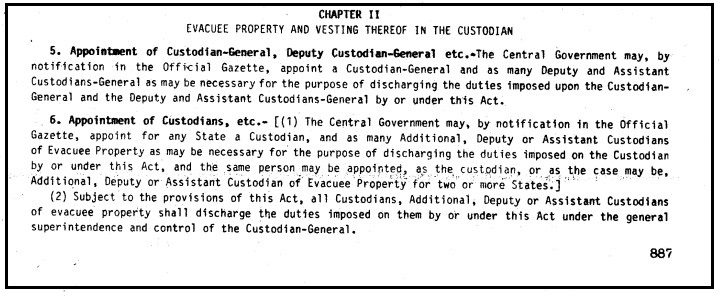
Properties of those who migrated from India to Pakistan were taken over by the government and then handed out to those who were coming from Pakistan to India.
Further, The Evacuee Interest (Separation) Act, 1951, was enacted to expedite the division and separation of evacuees’ shares from the non-evacuees’ shares in joint or composite properties.
The Displaced Persons (Compensation and Rehabilitation) Act 1954:
This act provides for the acquisition of evacuee property by the government and the payment of compensation to displaced persons.
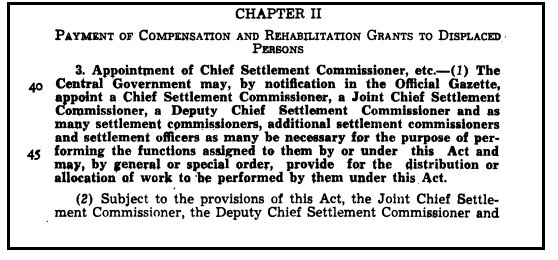
Defence of India Act, 1962 :
This act was framed as an emergency war legislation during the time Sino-India war. Rules framed in line with the Defence of India Act, 1962 vested the control of the immovable properties of those who opted for the Pakistan nationality with the government.
Enemy Property Act, 1968 :
Later on, the Enemy Property Act, 1968 enacted in wake of the 1965 India- Pakistan war, defined the term enemy property in line with the Defence of India Act, 1962. This act identified the properties of those who migrated to Pakistan & China following the India-China & India -Pakistan wars as enemy properties. The Enemy Property Act, 1968 further established a custodian and bestowed upon the Custodian of Enemy Property for India, the control over these properties.
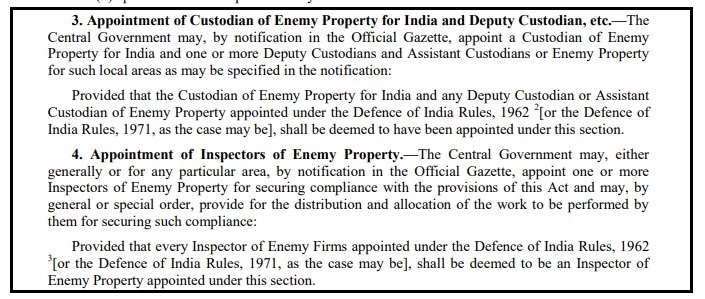
Over the years, the act was amended a few times and the latest amendment passed in 2017 (The Enemy Property (Amendment and Validation) Bill, 2016) has provided the government to seize these enemy properties. The amended Act further expanded the definition of the term ‘enemy subject’ and ‘enemy firm’ to include the legal heir and successor of an enemy, irrespective of their citizenship so as to guard the successors of those who migrated to Pakistan and China from claiming these properties.
In this regard, the amendment provided that enemy property shall continue to vest in the Custodian even if the enemy or enemy subject or enemy firm ceases to be an enemy due to death, extinction, winding up of business or change of nationality, or that the legal heir or successor is a citizen of India or a citizen of a country which is not an enemy.’

Thus from the above information, it is evident that it is not the waqf board, but the government had control over the properties of people who migrated to Pakistan are vested with the government. In fact, in 2019, the central government by amending the guidelines for disposal of the Enemy Property Order, 2018, sold a few of these properties and also allowed the state governments to put to public use some of the enemy properties (properties of those who migrated to Pakistan and China).

On the other hand, Waqf is the property given in the name of God for religious and charitable purposes. In legal terms, ‘permanent dedication by a person professing Islam, of any movable or immovable property for any purpose recognized by the Muslim law as pious, religious, or charitable’. However, there are no reports or evidence of the Waqf board taking control of the properties of people who migrated to Pakistan as claimed in the post.
To sum it up, the Government through Custodian of Enemy Property for India holds control over the properties of people who migrated to Pakistan, not the Waqf board.


